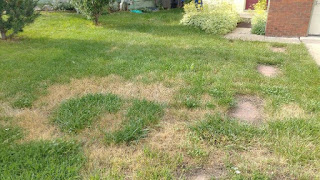Working in the August garden involves a number of tasks including harvesting, deadheading, weeding and planting. As tomatoes, peppers and other crops ripen, it’s important to keep up with the harvest. Picking fruits and vegetables as they ripen will encourage more production. An over-ripe crop left on the vine slows crop production and invites insect and disease problems. Which means gardening in August also includes being vigilant to changes in the appearance of your tomatoes and vegetable plants. Yellow, blotchy leaves, leaves with white residue are signs of problems in your vegetable garden.
Garden diseases can show up quickly and it’s important to know what you're dealing with in order to correct the problem quickly and effectively. We encourage you to bring a sample of the problem plant to our Diagnostic Center. We’ll examine the leaf sample and determine the cause of the problem and come up with a solution. Insect and disease problems often go hand-in-hand and it’s important to distinguish the base cause of plant issues.
August is also the time to be on the lookout for invasive weeds in the garden. Many weeds are producing seed heads this time of year. It’s important to prevent these seeds from being scattered in your garden so pull any weeds as soon as they appear. Don’t allow them to flower and go to seed, because the seed will scatter throughout your garden, compounding the weed problem next spring. While August gardeners face a variety of issues including diseases, insects, weeds, there’s also the opportunity to prolong your gardening season by planting cool weather crops now. This includes lettuce, spinach, kale, radishes and cabbage. Sow a crop every two weeks for an extended harvest. Keep a frost cloth handy to cover your crops when cooler weather arrives in October. Finally, work your garden every day. Staying on top of problems as they happen will keep your vegetable garden productive through the rest of the growing season.


























